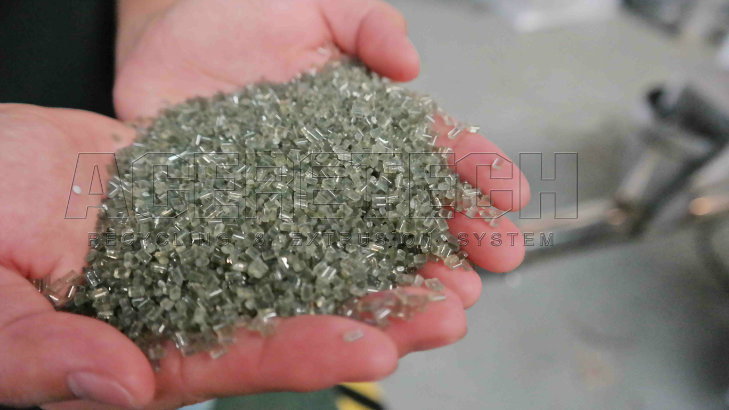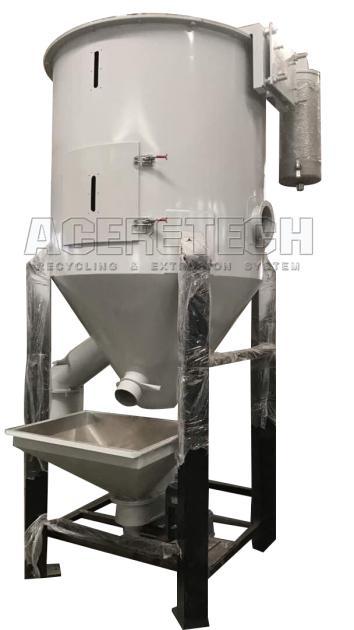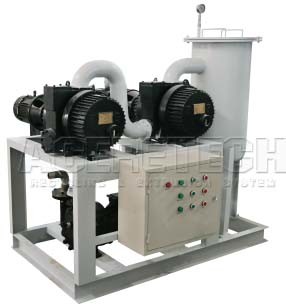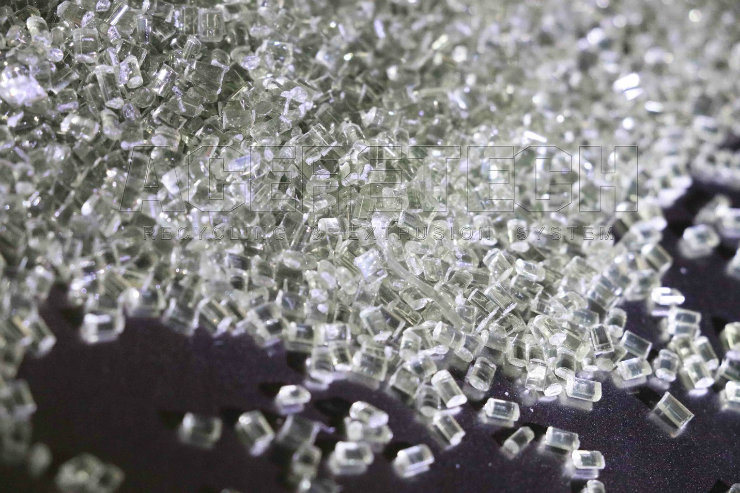Twin Screw Extruder and Pelletizing System for Pet Recycling
Background
Recycled PET bottle flakes are produced from waste beverage bottles through sorting, crushing, washing, and drying. This makes it possible to produce recycled PET flakes in any location where beverages are consumed. As one of the main importers of recycled PET bottle flakes, China imports over 10-13 million tons annually.
In 2017, China imposed stricter environmental regulations, banning the import of waste plastics, including recycled PET in any form such as bales or flakes. According to these rules, only granules or chips can be imported. Therefore, it is essential to re-pelletize recycled PET flakes for recyclers.

Recycled PET cannot be imported in any form. According to Chinese regulations, only granules or chips are allowed. Hence, re-pelletizing recycled PET flakes becomes necessary for recyclers.
Processing Concerns
- Avoid hydrolysis during the re-pelletizing process of PET flakes;
- Large displacement ventilating devices are required to minimize IV value reduction;
- Minimize yellowing during the re-pelletizing process;
- Automatic pelletizing methods are needed to reduce labor and ensure stable high output.

Recycled PET Bottle Flakes Re-Pelletizing Flowchart from ACERETECH

Features of PET Bottle Flakes Recycling and Pelletizing System from ACERETECH
- Adequate pre-drying time is essential before re-pelletizing. ACERETECH uses venting type compactors or lifting type drying hoppers to remove moisture and prevent PET hydrolysis;

- Combining modular processing sections with a well-designed twin screw extruder and an automatic three-stage roots-type vacuum pump system ensures a vacuum pressure of -0.1MPa, effectively removing volatiles from PET melts to maintain minimal IV value reduction;

- Optimized process steps and specialized extruder design help transform PET flakes efficiently from solid to liquid state, preventing yellowing due to dead zones or localized high temperatures;
- The strands pelletizing unit is commonly used for PET pelletizing. Strands from the extruder die are manually placed into a water trough to cool, then dried with an air knife, cut by rotating blades, and formed into granules. This method requires more labor and is suitable for capacities below 600kg/h;
- For high-capacity PET pelletizing, an automated underwater pelletizing system is essential to ensure high output and automation performance.

Recycling Machine Factories (ACERETECH)
| Model | ASE series |
| Feeding | Screw Loader |
| Extruder | Twin screw |
| Cutting Type | Strands pelletizing system |
| Cooling Type | Water cooled |
| Product | Plastic pellets/granules/resins |
| Material Type | Waste flakes and regrinds of PET |
| Material Shape | Flakes, regrinds |
| Video | Â |
| Website | http://www.aceretech.com |
Date
| Machinery Size |  | Date of twin screw extruder | Throughput rate      (Kg/hr) |
|||
| Â | Â | Diameter of screw(mm) | L/D | Motor power(Kw) | ||
| ASE65 | Â | Â | 62.4 | 36 | 90 | 200-300 |
| ASE75 | Â | Â | 71.2 | 36 | 132 | 300-500 |
| ASE95 | Â | Â | 91 | 36 | 315 | 600-800 |
Advantages of Our System
a. Water-cooling temperature control for the process section to ensure precise temperature control.
b. Strands pelletizing system integrated into the recycling system.
c. Arrangement for inspection, installation, and testing work.
d. Long-term service: We charge the buyer cost price for spare parts beyond one year and provide long-term technical support.
Service and Support
1. Overseas installation and training available.
2. Machine warranty with spare parts in stock and timely delivery.
Plastic Daily Necessities Injection Machine
Pet Preform Blowing Machine,Pet Test Tube Molding Machine,Plastic Cup Injection Moulding Machine,High quality small molding machine
Ningbo Outai Plastic Machinery Technology Co.,Ltd , https://www.outacmachine.com